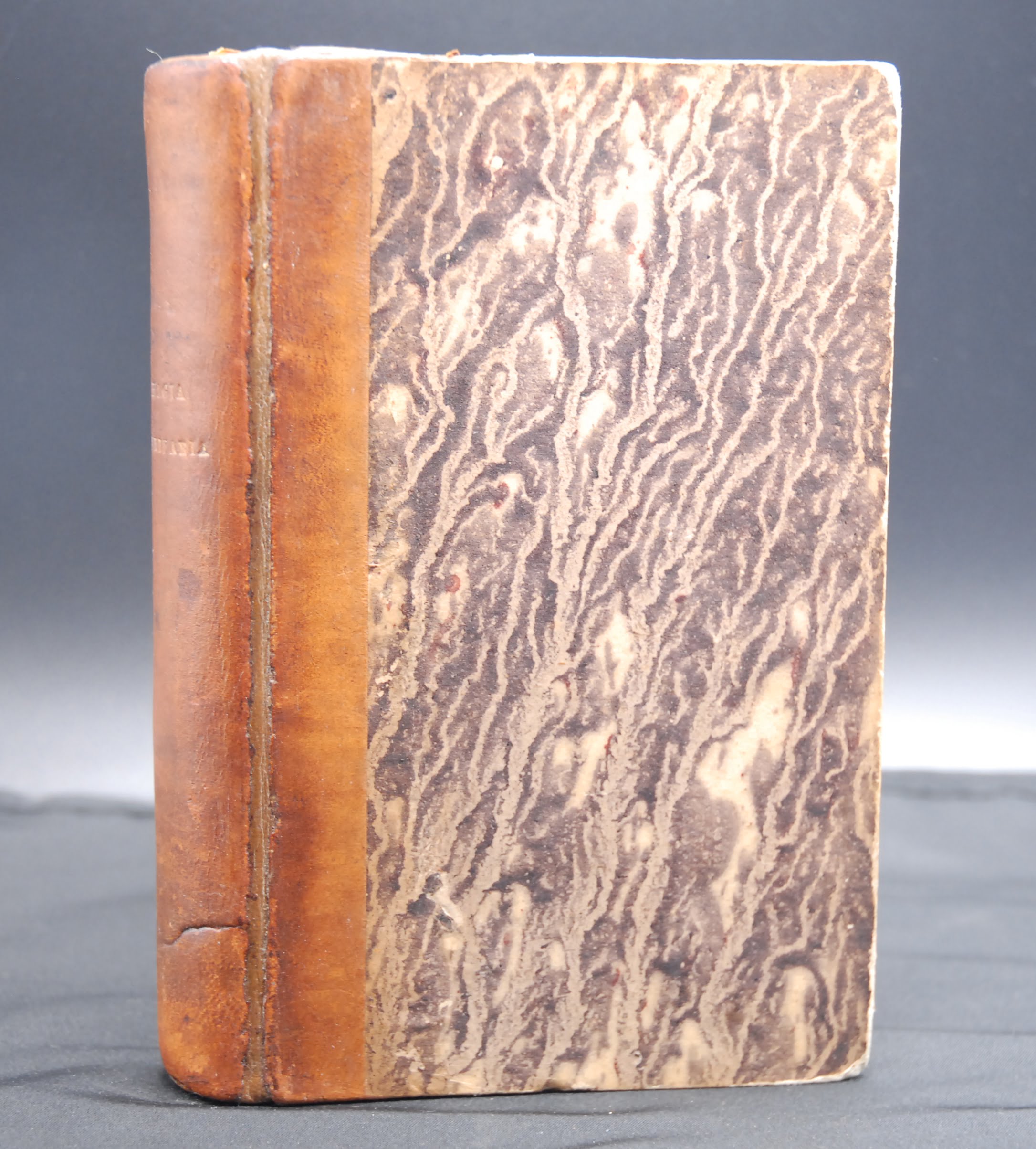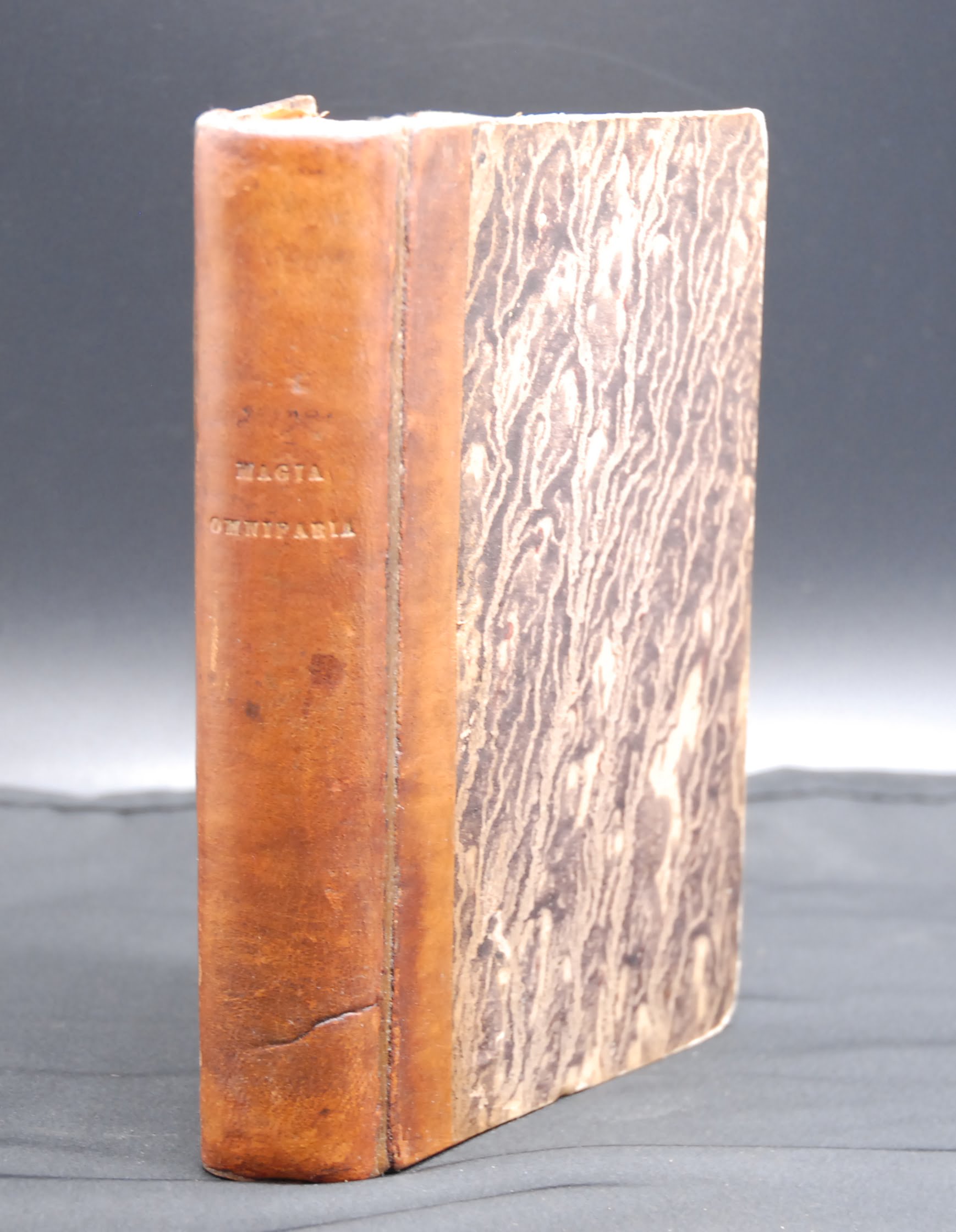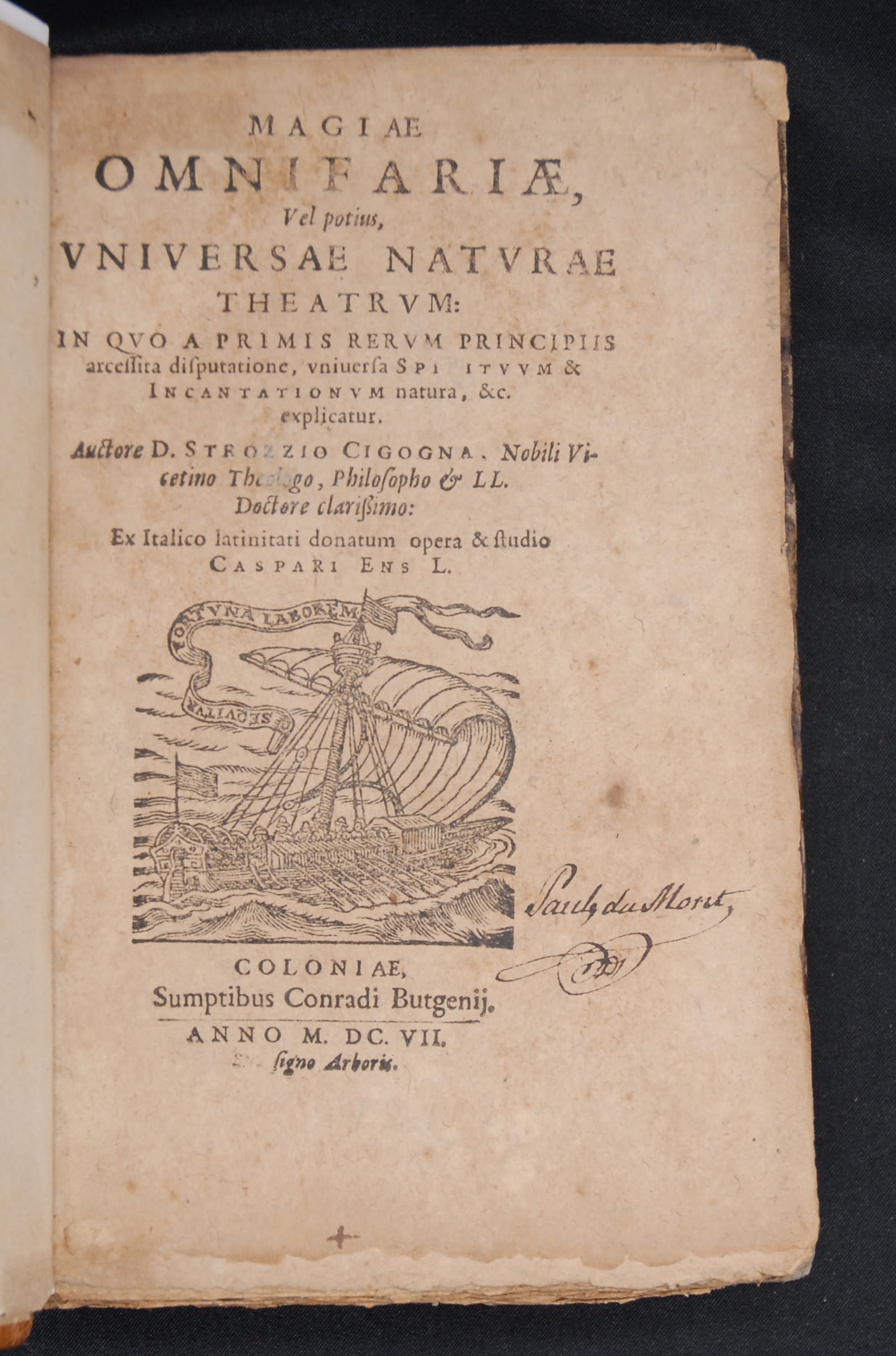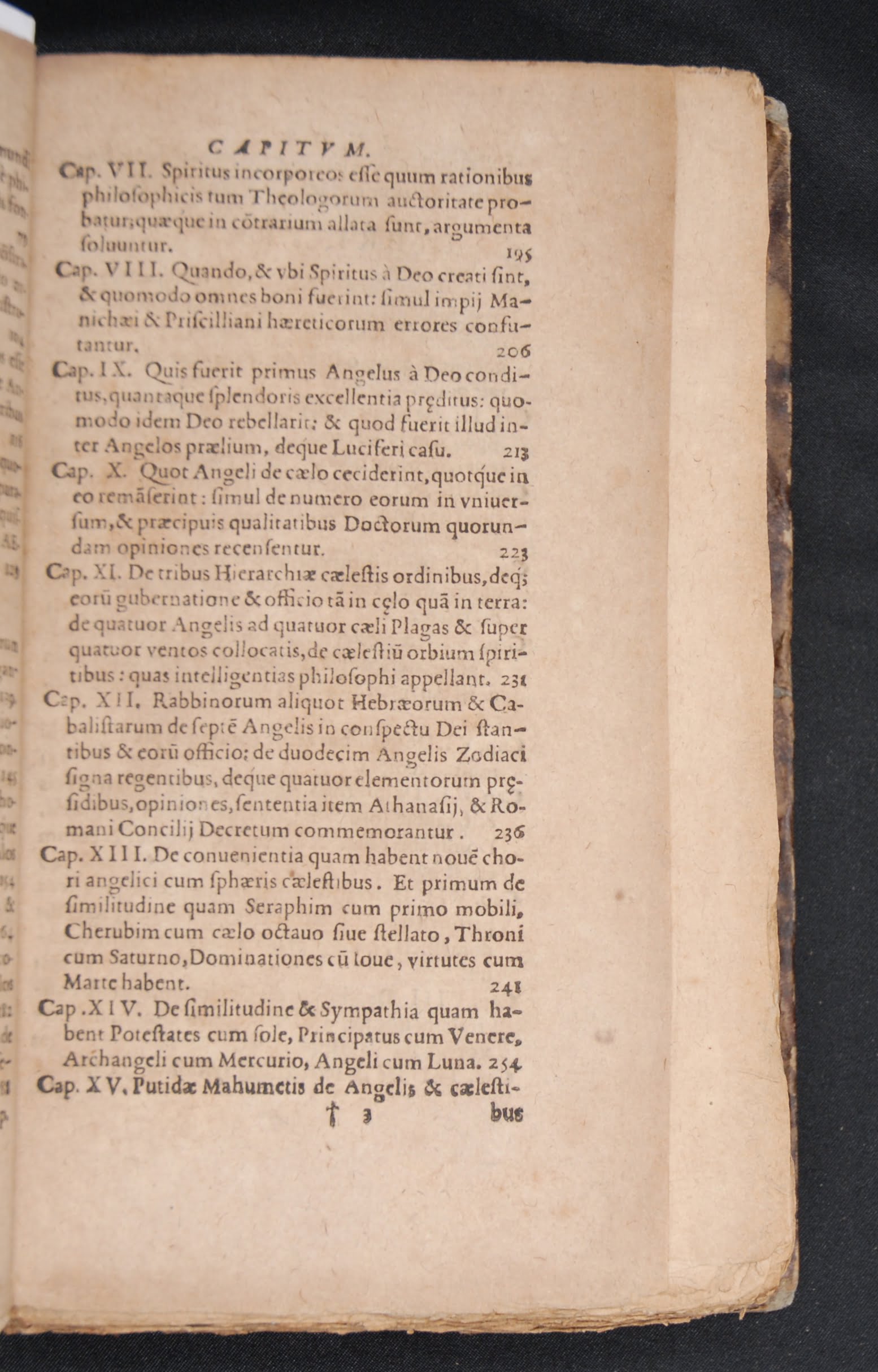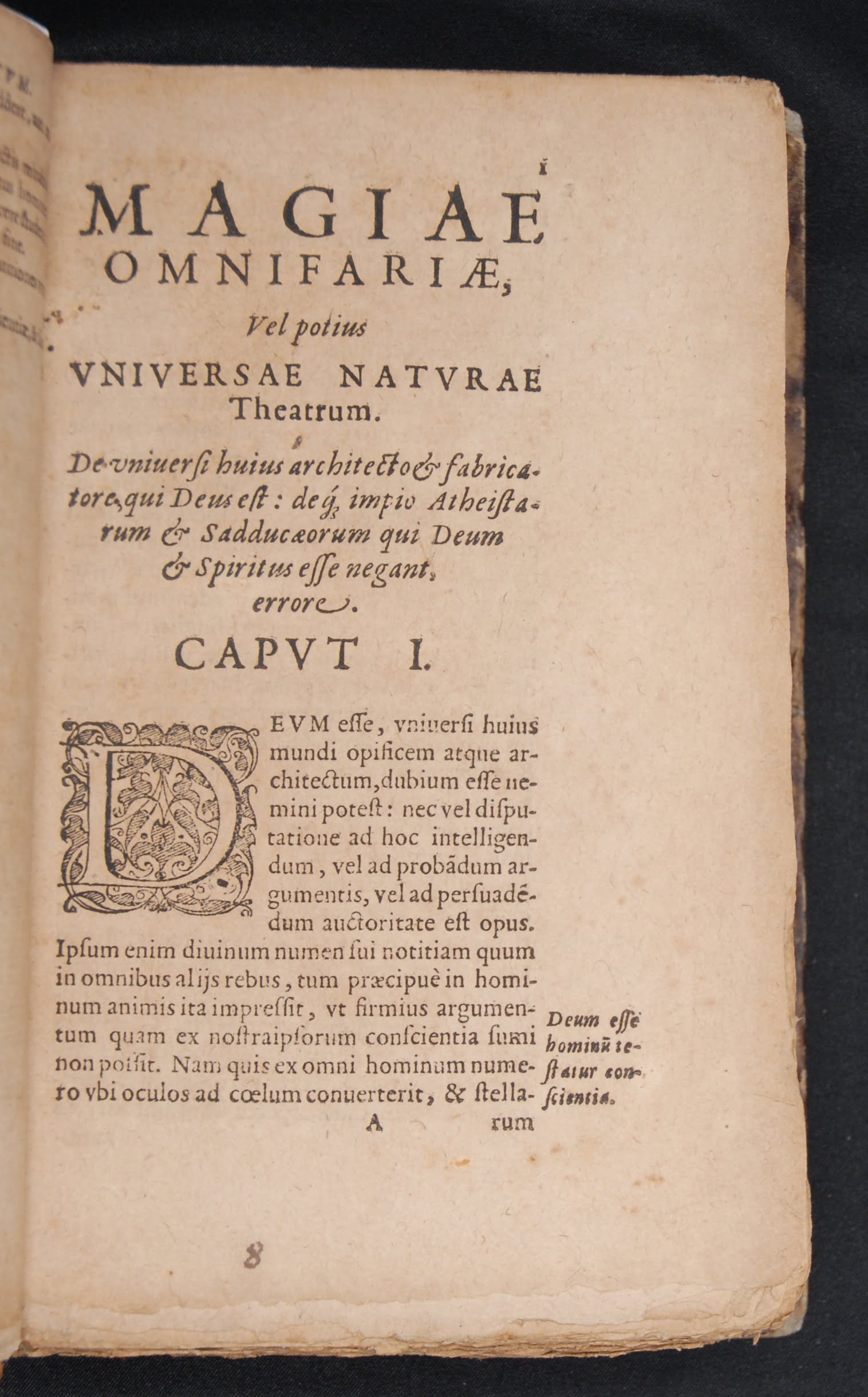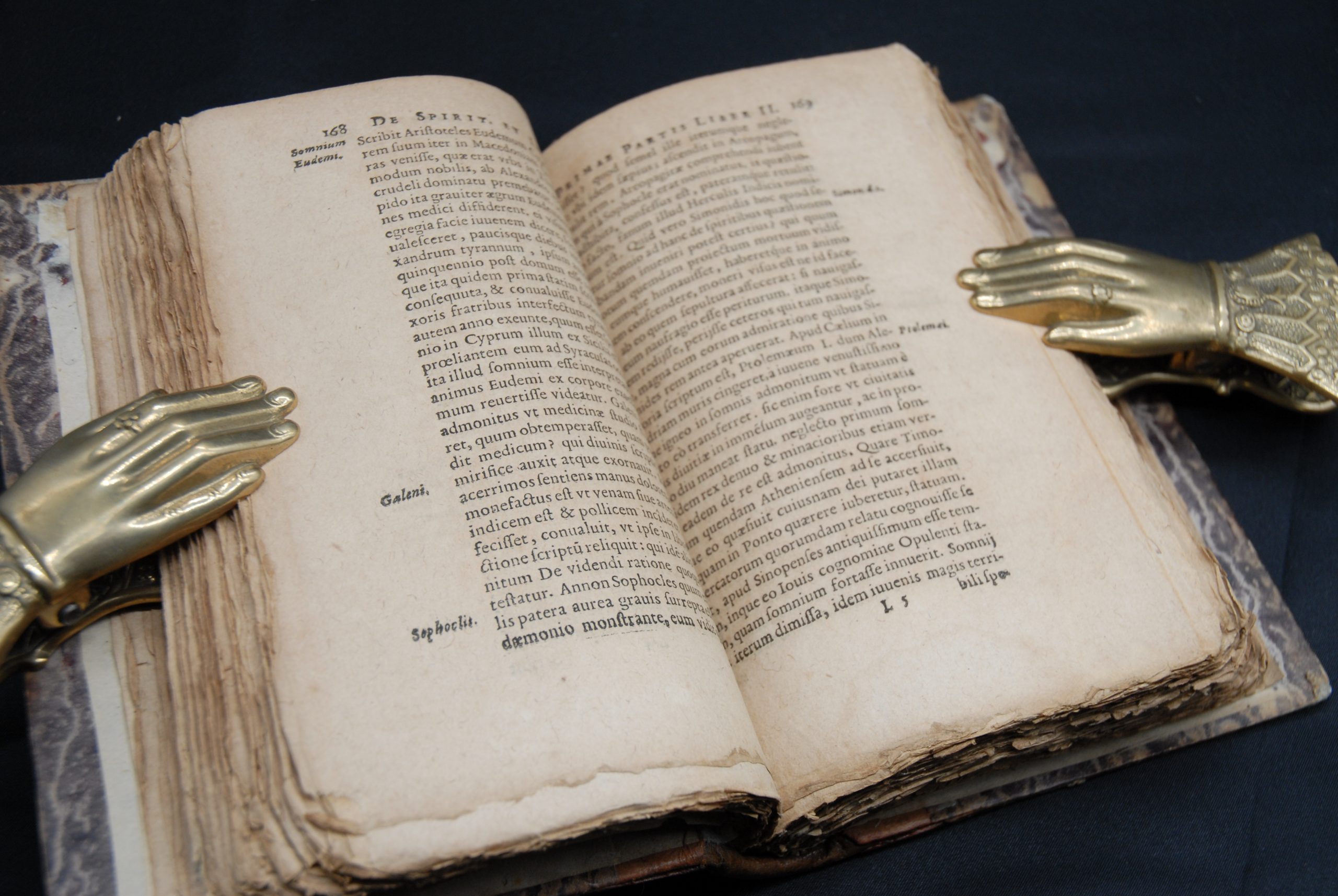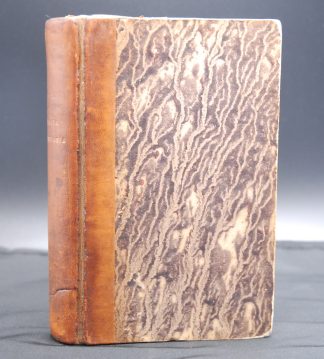CICOGNA, Strozzi.
SCARCE OCCULTUM – INSPIRING BURTON
Magiae omnifariae, vel potius, universae naturae theatrum.
Cologne, sumptibus Conradi Butgenij, 1607£3,500.00
8vo. pp. (viii) 568. Roman letter, little Italic. Woodcut printer’s device to t-p, woodcut initials and tailpieces. Varying degrees of age browning (poor paper), original edges untrimmed, small ink burn to outer blank margin of 2L1, little spotting to first and last gatherings and another handful of ll., all edges untrimmed. A good copy in quarter calf over marbled boards, spine and extremities rubbed. C17 or later Inscription c.1800 ‘Paulus du Mont’ to t-p and couple of early annotations.
A very good copy, with edges fresh from the press, of the scarce second Latin edition of this occultum—‘a very curious and uncommon work’ (Caillet I, 2373). Strozzi Cicogna (1568-1605) studied law at Padua; a late humanist, he devoted himself to poetry and philosophy, achieving lasting fame with ‘Il Palagio degl’incanti’, published in 1605. It was translated into Latin by Gaspare Ens in 1606; the 1607 Latin edition is an exact reprint of the first. It is a treatise on daemonology—a winning combination of ancient and Scholastic theories on god, the nature and origin of the world, with a Renaissance interest towards pagan, Christian, Hermetic and Cabalistic ideas, and a wealth of learned and popular anecdotes. Some of these Cicogna had heard from the archpriest of Barbarano, near his hometown Vicenza, who recounted supernatural events which had happened to him (‘Storia popolare d’Italia’, VII, 163). This ‘dense and almost unknown treatise’ contains ‘the most systematic taxonomy of the demonic presences inhabiting the creation’ and is ‘the most comprehensive and original treatise on angelic beings ever written in early modern Europe’ (Maggi, ‘Company of Demons’, 17). Book II is devoted to the nature of angels with comparative theories drawn from the classical and Hebrew tradition. Book III discusses the hierarchies and types of demons (aerial, earthly, aquatic, etc.), and Book IV studies the foundations of demonic magic and the demons’ interactions with human beings. Although the work was approved by the Inquisition in 1605—as ‘delightful for the vague and varied narrative’ and constantly ‘safe doctrine’—it was included in the Index in 1623. Robert Burton drew heavily from Cicogna’s work for his ‘Anatomy of Melancholy’; one of Cicogna’s anecdotes inspired a poem by the English Gothic novelist Matthew Gregory Lewis.
Chicago, Vanderbilt, Columbia and GW copies recorded in the US.Caillet I, 2373; BL STC Ger. C17 C647; VD 17 39:135414Z. Not in Thorndike. A. Maggi, In the Company of Demons (Chicago, 2006).In stock


